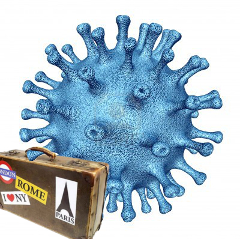Smooth moves block bacteria
 Australian engineers have come up with a new antimicrobial surface that massively reduces bacteria build-up.
Australian engineers have come up with a new antimicrobial surface that massively reduces bacteria build-up.
Monash University researchers say their new surfaces can reduce the formation of bacteria on medical instruments, such as urinary catheters, and reduce the risk of patient infection while in hospital.
A major innovation is the fact that the materials have surfaces with smooth, 3D micro features, instead of the traditional sharp cross-sectional ones, to reduce the potential for harmful bacteria to attach on these surfaces.
In comparison with existing materials, one of the surfaces, P01, presented excellent properties against E.coli, K.pneumoniae, and P. aeruginosa with 55 per cent, 69 per cent and 68 per cent less bacterial cells attached, and 53 per cent, 77 per cent and 66 per cent less microcolonies being formed, respectively.
Urinary tract infections (UTIs) associated with urinary catheters, are the most common type of healthcare-associated infections.
Approximately one in five of hospitalised patients globally are administered urinary catheters during their hospital stay. It is estimated that 13,000 people across the world die each year from UTIs, and a further 700,000 die from associated antimicrobial resistance infections because of the resistance of superbugs to antibiotics and current sterilisation methods.
“Using E.coli as an example, we found bacterial cells that form on surfaces do so mostly on the sharp corners. By removing these sharp features, the bacteria can no longer colonise the surface as effectively. This same effect has been demonstrated for the two other pathogens in this study,” says Dr Sara Ghavamian, the engineer who created the surfaces.
“High-touch surfaces within hospitals, such as catheters and ventilators, are a significant source of microbial spread and healthcare-associated infections.
“Infection control through physically altering the micro architecture of these surfaces, rather than the traditional use of chemical agents, is not only a more durable approach but also an effective strategy for combating antimicrobial resistance.
“After equivalent incubation periods with the same bacteria, we discovered that while the micropatterned surfaces were indeed successful in reducing the number of microcolonies formed they, problematically, increased the number of attached bacteria compared with traditional micro-flat surfaces.
“Opposite the conventional sharp micropatterned surfaces, our smooth design demonstrated a simultaneous decrease in both the number of bacterial attachment and microcolony formation compared to the standard flat surfaces.
“Developing strategies to prevent the bacterial colonisation of surfaces, such as catheters, without requiring antimicrobial drugs or chemicals is critical to stop biofilm formation and the potential spread of harmful diseases.”
The full study is accessible here.








 Print
Print